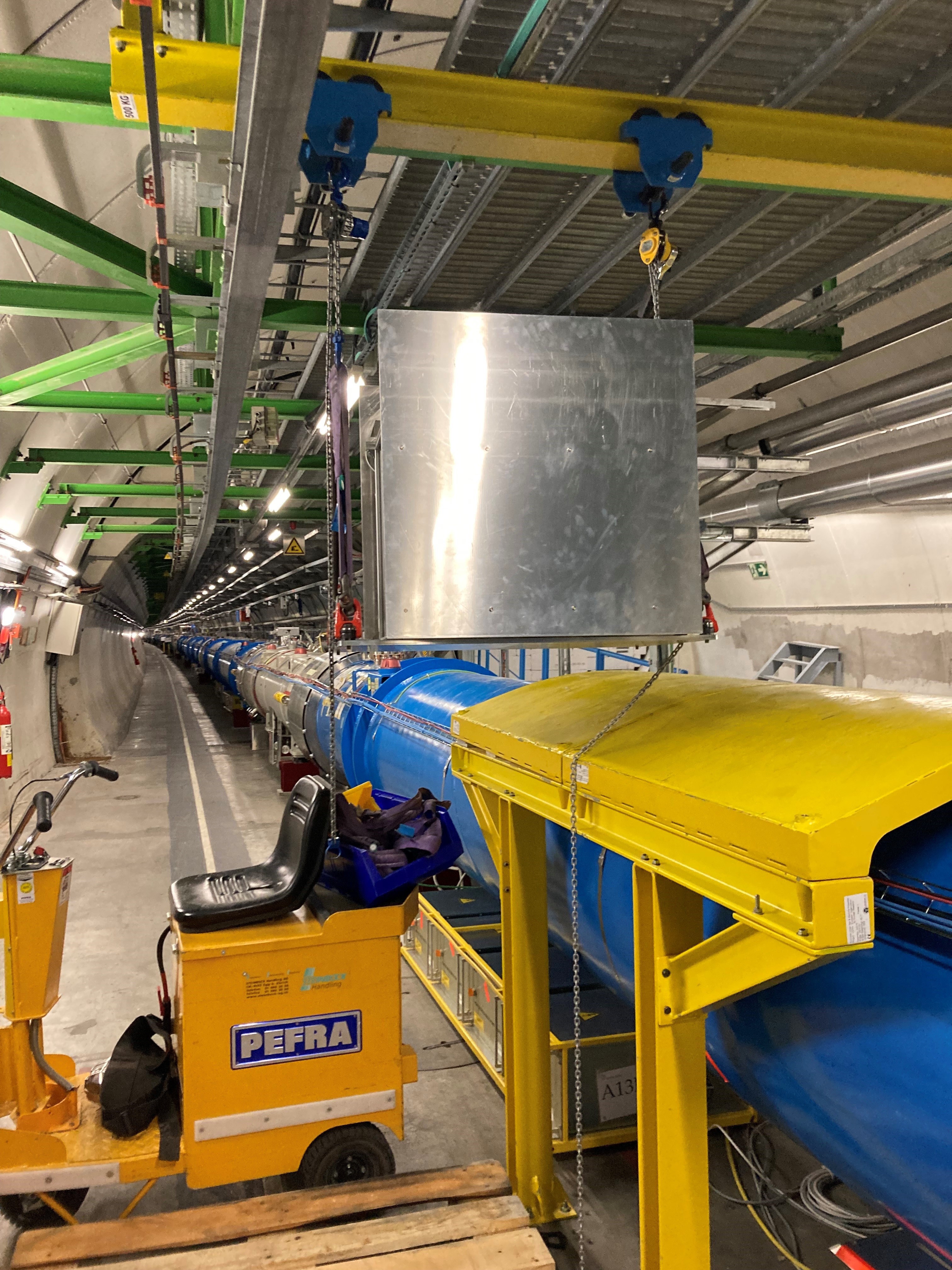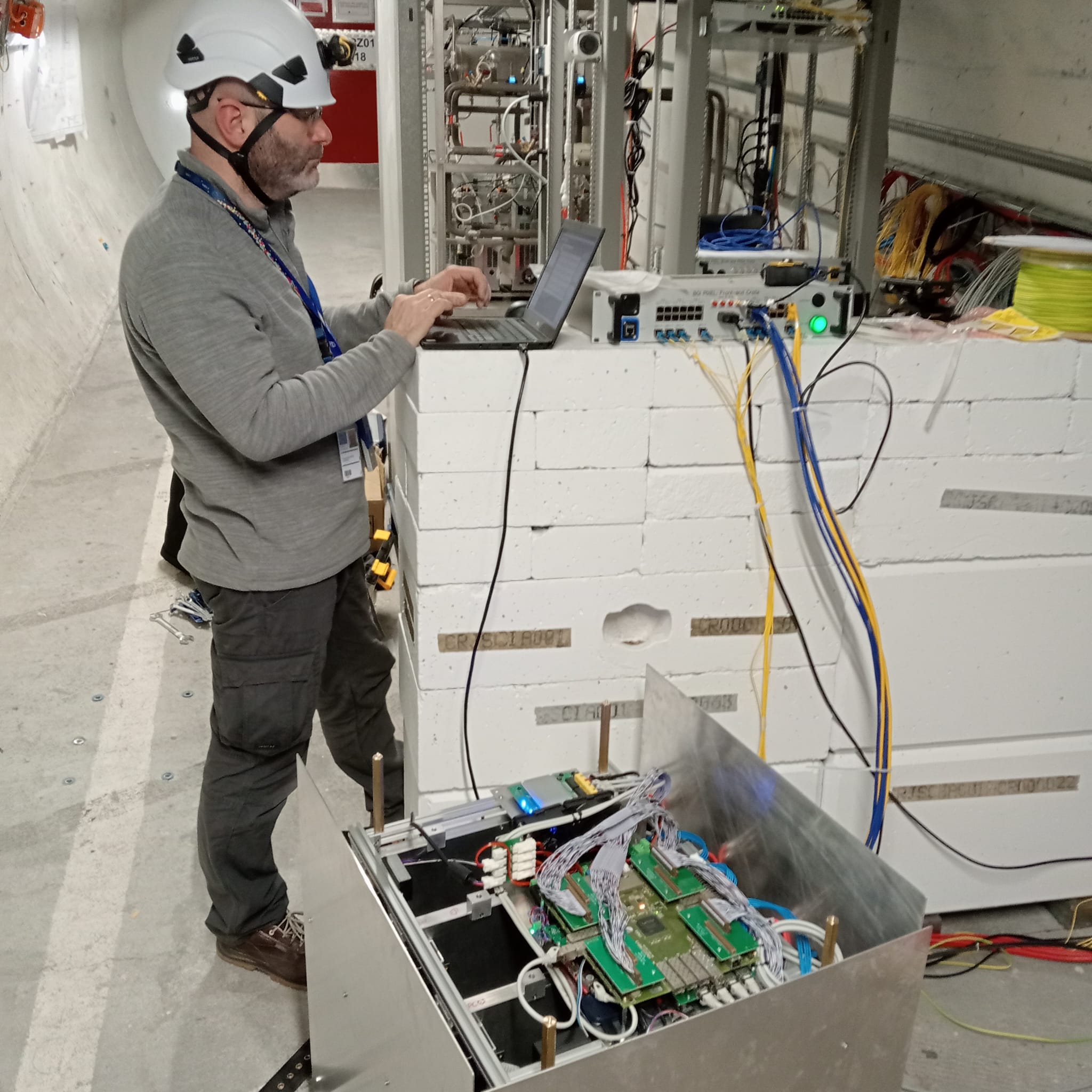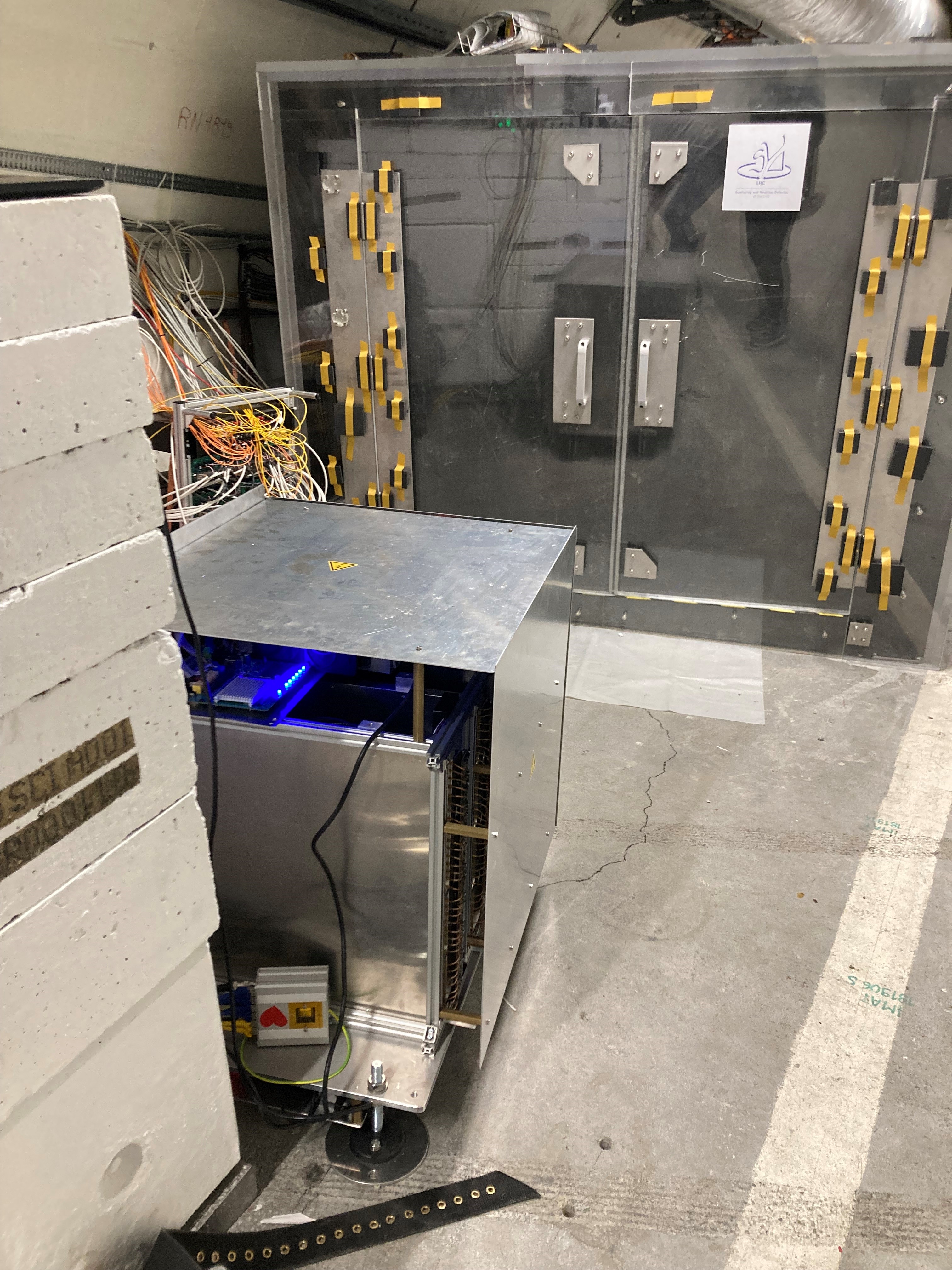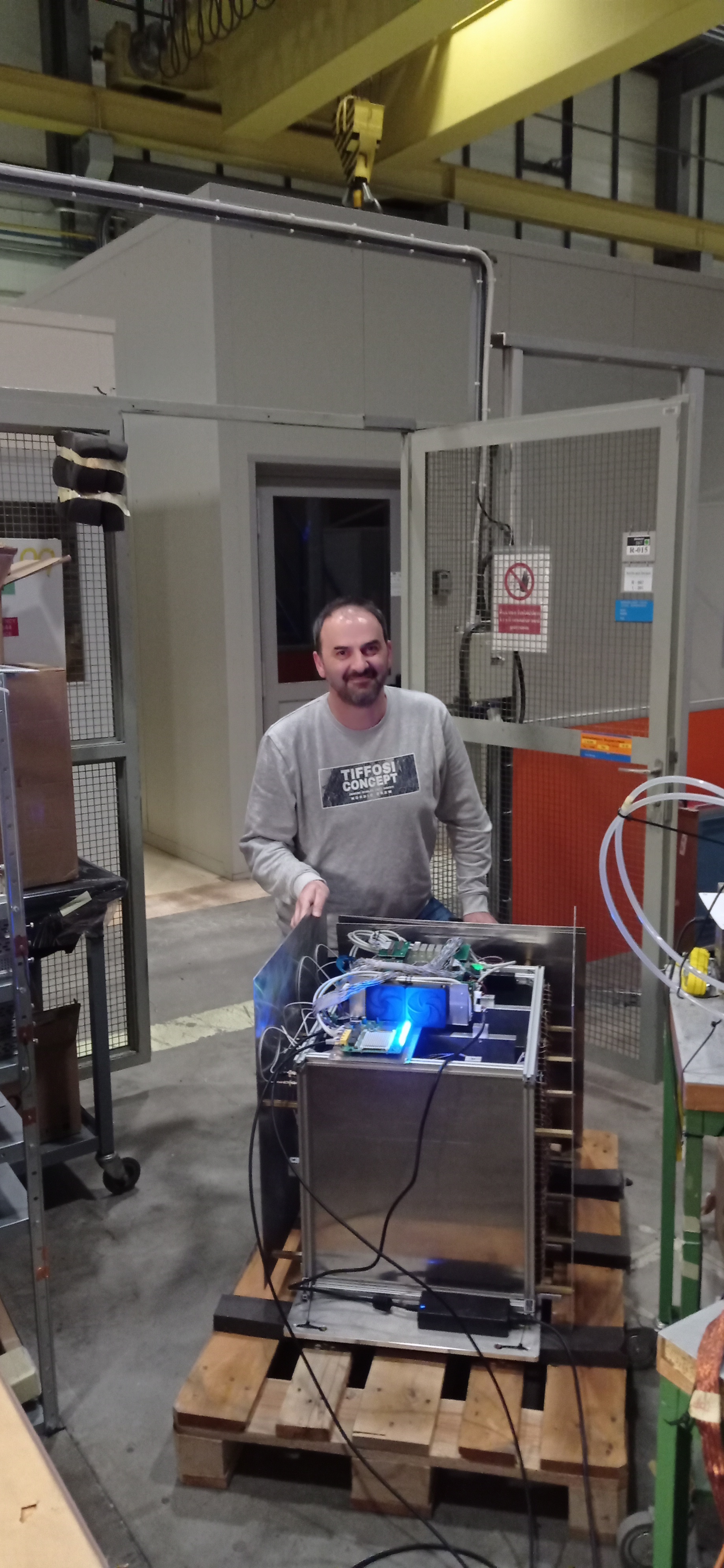New LIP detector installed at the LHC
"A muon telescope based on the novel sealed RPC technology has been installed in front of the target of the SND@LHC experiment at CERN"

The new detector was designed and built at LIP, and installed last month in the experimental area of SND@LHC, a few meters from the LHC beams. The detector employs a novel technology developed at LIP, referred to as sealed RPCs. It will allow to measure the flux of muons produced in the proton-proton collisions and to validate the detector concept in the LHC environment.
SND@LHC is the most recent experiment at CERN’s LHC and has recently observed for the first time neutrinos produced at a collider. A key to observing neutrinos in the intense environment of the LHC lies on a precise understanding of the backgrounds, which are dominated by energetic muons produced in the proton-proton collisions that interact with materials in or around the experiment. An accurate measurement of the muon flux is therefore a central ingredient.
The telescope has been built to further allow portability and autonomous operation, rendering it suitable to probe different angular regions and locations. Including potential locations for the upgraded detector, AdvancedSND, that is being proposed for the high-luminosity (HL-LHC) phase.
The telescope is based on the Resistive Plate Chambers (RPC) technology, which are gaseous detectors in which LIP has a longstanding involvement and expertise. In the detector concept adopted for the telescope, referred to as sealed RPC (sRPC), the chambers contain gas but are hermetically sealed after construction. In this way, the detector does not require continuous gas flow for its operation, reducing to negligible levels its environmental impact.
The detector has been built and assembled in Coimbra, and its stability monitored, before being transported to CERN, reassembled and descended into the TI18 tunnel of the LHC. The detector has been placed in front and aligned with the SND@LHC veto and target systems. As Run 3 of the LHC will soon resume, the new detector is ready to start measuring muons originating from the proton-proton collisions that occur at about half a kilometre away at the centre of ATLAS. It shall further allow to establish the technology and assess its performance in the challenging environment of the LHC.






